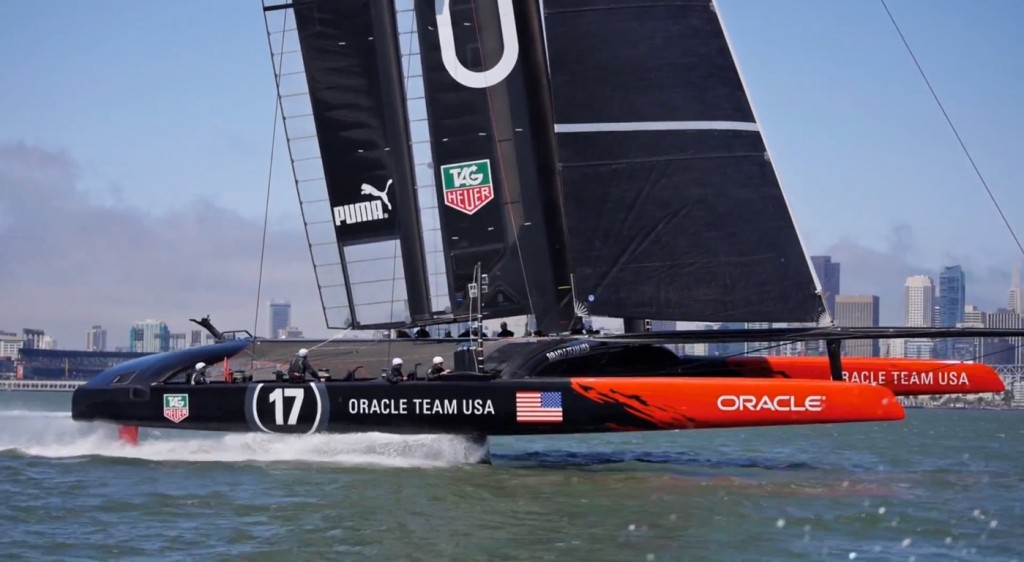Boats we love: AC72 catamaran
As plans for AC35 begin to emerge, Jack Griffin takes a look back at the AC72 – the boat that changed the face of sailing.
The AC72 has changed the sport of sailing forever – the finals of the 34th America's Cup produced one of the sporting comebacks of the century. But it is also the boat upon which one of the UK's best loved Olympic sailors, Andrew 'Bart' Simpson lost his life after a capsize. And the reality is that these giants' useful sailing days are probably over: the sheer number of people required to prepare, sail and recover one of these beasts makes them enormously expensive and impractical to sail. Guest blogger Jack Griffin – a self-described America’s Cup geek – takes a look back at the monster multihulls that thought nothing of hitting speeds of 40+ knots in less than 20 knots of wind.
See some great footage of the AC34 racing here on boats.com

Foiling on all points of sail and hitting speeds over 45 knots downwind, the AC72 has changed the face of sailing forever.
Photos courtesy Oracle Team USA
The wing: AC72 Catamaran

The wingsail is bigger than the wing of a 747 jumbo jet and generates enormous force powering the boat at more than twice the windspeed.
Bigger than the wing of a 747, the rigid wing sail is 130 feet (40 meters) tall and has five times the surface area of the wings that were used on the AC45s. Flaps on the trailing edge provide lift. The flaps have multiple segments to shape the wing to match the wind and control the power.
Daggerboards: AC72 Catamaran
This was the revelation that really ignited interest in the event: the daggerboard shapes enable hydrofoiling. Emirates Team New Zealand were the first to exploit a loophole in the design rule — no movable control surfaces are permitted on the daggerboards or rudders. But moving the entire daggerboard gives enough control to permit the AC72s to fly. The control systems are closely guarded secrets.
Hulls: AC72 Catamaran
The “platform” provided by the hulls, crossbeams and trampoline is the size of a tennis court. You could fit six AC45s in the space of an AC72. When hydrofoiling at speeds over 40 knots, the aerodynamic drag of the hulls becomes even more important than the hydrodynamics! Of course, when the boats come off the foils, the volume in the bows is crucial to preventing a pitchpole.
Ergonomics: AC72 Catamaran
Deck layout and crew choreography are not as sexy as wing sails and hydrofoiling, but the physical energy required to race the AC72 for 40 minutes makes traditional keelboat match racing look like a game of lawn bowls. The severely short-handed crew of 11 must provide all the power for the manoeuvres — no stored energy is permitted. Hoist the gennaker 130 feet to the top of the wing. Furl and unfurl it during gybes. Raise and lower the daggerboards during every tack and gybe. Trim the headsail and the wing. And sprint across the trampoline netting – 30 per cent wider than a doubles tennis court – at every tack or gybe.
Too powerful? Too dangerous? AC72 Catamaran
Two of the four teams capsized in the build-up to the competition, one fatally. Emirates Team New Zealand's near capsize on live TV was terrifying to watch, and left both crews in the race visibly shaken. There’s no way to reef the wing, so the boats are seriously overpowered above 20 knots and the safety Review Committee appointed after the death of olympic gold medalist Andrew “Bart” Simpson recommended reducing the upper wind limit from over 30 knots down to 24 knots.














